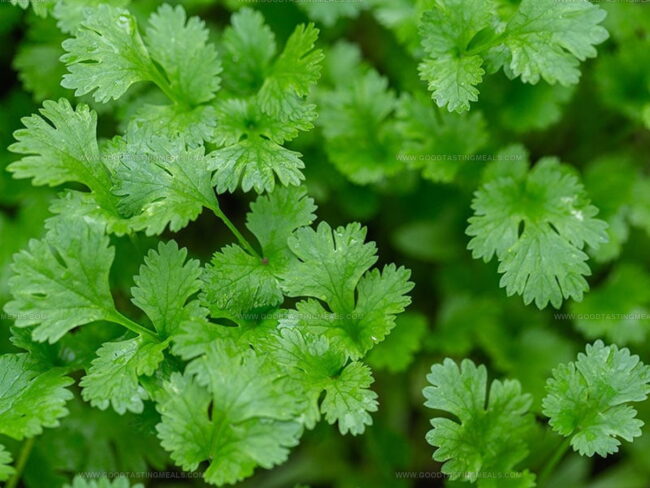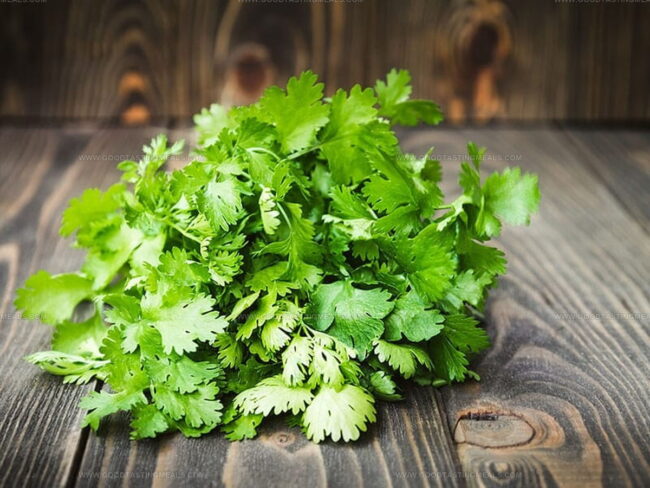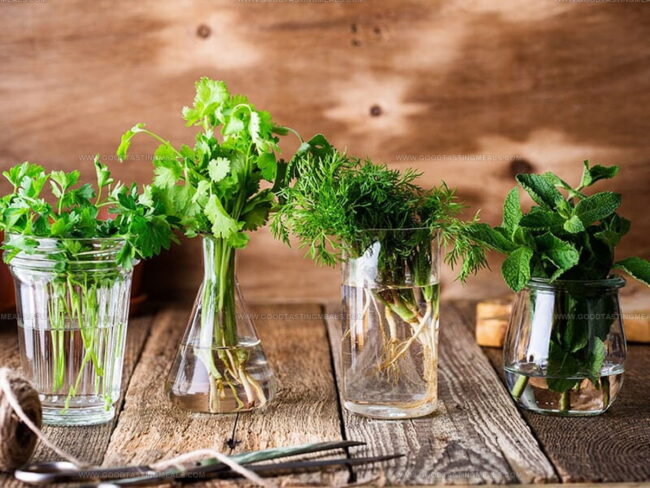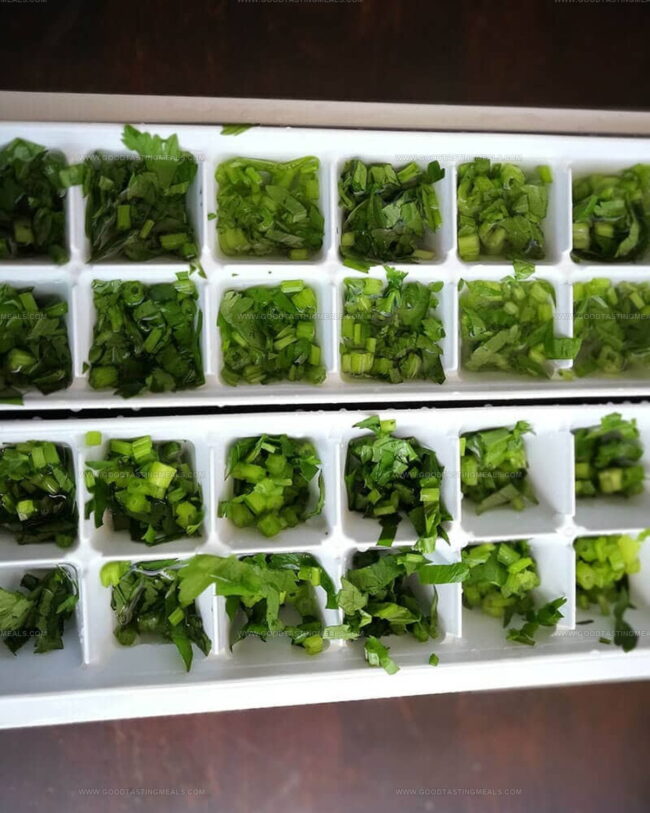Dried or Fresh Cilantro: Which One Packs More?
Dried vs. fresh cilantro remains a debatable topic among culinary enthusiasts worldwide.
Many home cooks struggle with deciding which version works best for their recipes.
The distinct aromatic qualities present in both forms contribute unique flavors to various dishes.
Fresh leaves offer bright, citrusy notes that shine in uncooked preparations like salsas and garnishes.
Dried versions, however, maintain their potency longer and blend well into cooked meals where subtle background notes are desired.
Those powerful differences explain why professional chefs often keep both on hand for different applications.
Every kitchen deserves access to this versatile herb in multiple forms, allowing you to experiment with both options as needed.
Ready to transform your meals with the perfect cilantro choice?
Cilantro: The Herb That Brightens Every Dish
Cilantro is the fresh leaf of the coriander plant, botanically named Coriandrum sativum. It’s often used as a substitute for coriander and belongs to the parsley family.
Known as a versatile herb, almost every part of cilantro: seeds, leaves, and roots, is edible and used in cooking.
Originally from the Mediterranean and Middle East, cilantro is now popular worldwide and goes by various names like Chinese parsley, fresh coriander, or Mexican parsley.
Rich in nutrients, cilantro offers health benefits such as reducing risks of seizures, obesity, diabetes, and heart disease when consumed regularly.
You can use fresh or dried cilantro in recipes, but they serve different purposes.
Understanding these differences will help you enhance your dishes with well-rounded flavors.
Fresh vs Dried Cilantro: The Complete Flavor Guide
Check out the comparison table for a quick overview before diving into specific details for a complete understanding.
| Feature | Fresh Cilantro | Dried Cilantro |
| Appearance | Long, thin green stalks with flat, round, slightly jagged leaves; looks similar to flat-leaf parsley but with distinct shape and tender stems. | Darker color, crunchy texture; leaves break apart easily and are not intact. |
| Flavor | Bright, pungent, complex with citrusy, peppery, and slightly tangy notes; some find it soapy due to aldehyde compounds. | Milder, more subtle, less pungent; retains hints of anise, pepper, mint, lemon, and pine. |
| Aroma | Fresh, earthy, and citrusy (lime and lemon-like); loved or disliked depending on sensitivity. | Gentle and mild, less intense than fresh. |
| Shelf Life | Lasts 2-4 hours at room temp; 1-2 weeks refrigerated; up to 1-2 months frozen. | Lasts 1-3 years if stored properly in airtight containers away from heat, moisture, and sunlight. |
| Storage | Store in fridge wrapped or in water; freeze for long-term storage. | Store in airtight, opaque jars in a cool, dry, dark place away from moisture and heat. |
| Usage | Used fresh in salsas, toppings, garnishes, and dishes where bright flavor is key. | Best for long cooking dishes like soups, stews, beans, rice, and casseroles where subtle background flavor is desired. |
| Substitutes | Parsley (with lemon/lime juice), basil, or dill; fresh cilantro can substitute dried at 2:1 ratio. | Fresh cilantro (use twice the amount of dried), parsley, basil, or dill. |
| When to Add | Add fresh cilantro at the end of cooking or as a garnish to preserve flavor. | Add dried cilantro early in cooking to allow flavors to develop. |
| Popularity & Price | Widely used, fresh cilantro is slightly more expensive but affordable. | Easy to find, cheaper than fresh, great for pantry stocking. |
Appearance
Both lard and shortening look almost identical with their rich, creamy white color and smooth, buttery feel when you touch them. These solid fats stay firm and don't pour or run at normal room temperatures.
The similar appearance often causes confusion in kitchens, but their identical white hue and spreadable quality make them equally convenient for many recipes.
Flavor
Fresh cilantro has long, thin green stalks topped with flat, round leaves that have slightly jagged edges. Its shape can remind you of flat-leaf parsley, but the leaves are distinct, and the tender stems make it easy to separate by hand.
In contrast, dried cilantro looks quite different - darker in color with a crunchy texture, and its leaves are usually broken into small pieces rather than intact.
Aroma
Cilantro changes character once dried, with a much milder scent that most people find agreeable. Fresh cilantro, on the other hand, delivers a dramatic difference in aroma - earthy notes mixed with citrus hints reminiscent of lime.
Cilantro fans typically enjoy this distinctive blend of lime and lemon fragrances in the fresh leaves. Those who aren't fond of cilantro often detect a sharp, soapy smell instead.
Many herb enthusiasts notice this stark contrast between dried and fresh versions, making cilantro one of the more polarizing herbs in kitchens worldwide. The dried form tends to be more universally accepted since its intensity diminishes significantly during the drying process.
Shelf Life
Fresh cilantro is delicate and perishable, lasting only 2 to 4 hours at room temperature, 1 to 2 weeks when refrigerated, and up to 1 to 2 months if frozen. Dried cilantro has a much longer shelf life and can retain good quality for 1 to 3 years if stored properly in airtight containers away from heat, moisture, and sunlight.
Storage
To keep fresh cilantro fresh longer, it’s best stored in the refrigerator, either wrapped or placed in water like fresh flowers. For long-term preservation, freezing is a good option.
Dried cilantro should be stored in airtight, opaque jars in a cool, dry, and dark place, avoiding exposure to moisture, heat, or direct sunlight to maintain its quality.
Application
Fresh cilantro is often used in recipes where its bright, bold flavor shines - such as salsas, garnishes, and fresh salads. Dried cilantro is better suited for dishes with long cooking times like soups, stews, beans, rice, and casseroles, where it provides a subtle, background flavor without overpowering the dish.
When To Add
To preserve its vibrant flavor, fresh cilantro should be added at the very end of cooking or used as a garnish. In contrast, dried cilantro needs time to infuse its flavor and should be added early in the cooking process to allow it to blend well with other ingredients.
Popularity And Price
Fresh and dried cilantro can be found in most supermarkets since many recipes across different food traditions call for this key ingredient. Having a few jars of dried cilantro stored in your pantry helps when fresh herbs aren't available.
While fresh cilantro costs a bit more than its dried counterpart, the price difference isn't too steep, so there's no need to worry about spending too much. Both options give you flexibility in your cooking without breaking the bank.
How to Keep Cilantro Fresh
Keeping cilantro fresh doesn't have to be hard with the right approach. All you need are some basic tools with some tricks.
Check out these ideas to keep your herb at its best.
At Room Temperature
Fresh cilantro just needs a quick rinse under cold water before adding its zesty flavor to your cooking. This simple wash removes any dirt or mud clinging to the leaves, making the herbs ready to chop and toss into salsas, tacos, or soups right away.
The clean leaves will bring that distinctive pop of flavor many people love in their favorite dishes.
In The Fridge
Keeping cilantro in your fridge helps preserve its fresh taste and green color for a longer time. The cool temperature slows down wilting, so your herbs stay ready to use whenever you need them.
Method 1: Wrap Cilantro
After buying wet cilantro, let it air dry on a paper towel for 10-15 minutes. Pat dry with another towel to remove excess moisture.
Divide cilantro into 3-4 small bunches, wrap loosely in paper towels, and place them in a resealable plastic bag or an airtight container lined with paper towels.
Avoid packing tightly to prevent bruising. Store in the fridge.
Method 2: Use Cold Water
Trim bad leaves and excess stems to fit your container. Fill an airtight container with cool water (enough to cover stems but not overload cilantro).
Place cilantro in the water, cover with a lid, and refrigerate. Change water every 1-2 days. Leaves may brown after peak freshness, but texture remains good.
Method 3: Use Turmeric Water
Separate leaves and stems. Mix 1 teaspoon turmeric powder into a small cup of water.
Soak cilantro leaves in this mixture for 30 minutes, then rinse thoroughly and let dry. Store wrapped in paper towels inside an airtight container in the fridge.
Method 4: Store in a Jar or Cup
Fill a clean jar or cup with 3 inches of tap water. Pat cilantro dry (don’t wash), trim stems about 1 inch, and place them in the water.
Cover loosely with a plastic bag secured with a rubber band to maintain humidity. Store in the fridge. Wash before use.
Consume within two weeks for best flavor.
In The Freezer
Another way to store cilantro is keeping it in the freezer. Check these methods and find the best ones for you.
Method 1: In the Bag
Rinse cilantro under clean water for about 20 seconds, then let it drain in a basket for 2 minutes. Pat dry with paper towels.
Cut into smaller pieces if desired, separating leaves from stems with a sharp knife. Spread cilantro on a baking sheet-lined tray, making sure pieces don’t touch, and freeze for 30 minutes to quick-freeze.
Transfer the frozen cilantro to a freezer-safe bag, squeeze out the air, label with the date, and return to the freezer. Do this quickly to prevent the cilantro from clumping together.
Method 2: In an Ice Cube Tray
Wash cilantro thoroughly under tap water, then let it drain. Pat dry, then chop or blend the cilantro.
Place about 1 tablespoon of chopped cilantro in each ice cube compartment and cover with water. Freeze the tray, label with the date, and store for easy portioning when cooking.
Tip: For longer preservation, mash cilantro with salt in a 1:4 ratio (1 teaspoon salt to 4 teaspoons cilantro) to keep it fresh up to 1 year. Remember to reduce salt in your recipes to avoid overpowering the flavor.
Drying Fresh Cilantro at Home
Making your own dried cilantro at home beats anything from the store shelves, with much better flavor than pre-packaged versions. When fresh bunches start wilting in your fridge or you've bought too much, drying offers a smart way to save money and reduce waste.
Method 1: Air Dry
To air-dry cilantro, start by washing it thoroughly under running water and patting it dry with a paper towel to remove excess moisture.
Tie the stems together with a string, leaving about an inch from the bottom.
Place the bunch inside a paper bag, secure the bag around the stems, and hang it in a warm, dry area away from direct sunlight.
After about a week, check if the cilantro is dry by seeing if it crumbles easily; if not, hang it for another week.
Once fully dried, store the cilantro in a jar kept in a cool, dry place.
Method 2: Using Oven
Using the oven is a quick and convenient way to dry a large amount of cilantro. First, wash and dry the cilantro thoroughly as you would for air-drying.
Preheat the oven to 250°F and lightly spray a baking tray with baking spray to prevent sticking. Use only the leaves, discarding the stems, and spread them in a single layer on the tray.
Place the tray on the middle rack and bake for about 30 minutes without opening or shaking. Afterward, check if the cilantro is dry, remove it from the oven, let it cool for 10 minutes, then scrape the dried leaves off the tray and store them in a clean container.
Method 3: Using Microwave
Microwaving is a faster way to dry cilantro compared to using an oven, requiring only paper towels and a microwave-safe plate - no baking spray needed.
After washing and drying the cilantro, place two paper towels on the plate and spread a single layer of cilantro between them to absorb moisture as it dries.
Microwave the cilantro for 2 minutes, then let it cool for 1 minute. If it’s not fully dry, microwave for an additional 30 seconds.
Once dried, store the cilantro in a jar for later use.
Method 4: Using Dehydrator
Drying cilantro with a dehydrator is a simple method requiring only paper towels and the dehydrator itself. Start by washing and thoroughly patting the cilantro dry to avoid uneven drying.
Spread a single, thin layer of cilantro evenly on the dehydrator tray; if using multiple trays, keep the layers thin to speed up drying.
Set the dehydrator to 110°F and dry for one hour.
Afterward, check if the cilantro is crispy and fully dry; if not, continue drying for another 30 minutes. Once dried, store the cilantro in a clean container kept in a cool, dry, and dark place.
Got Questions? We’ve Got Solutions
1. Can I substitute dried cilantro for fresh in a recipe?
Yes, you can substitute dried cilantro for fresh, but the flavor will be milder. Use 1 teaspoon of dried cilantro for every 1/4 cup (or 4 tablespoons) of fresh cilantro called for in a recipe.
2. How long does fresh cilantro last in the refrigerator?
Fresh cilantro typically lasts 7-10 days in the refrigerator when stored properly. Keep it in a glass of water with a plastic bag loosely covering the leaves, or wrap it in a damp paper towel inside a plastic bag.
3. Does dried cilantro taste the same as fresh?
No, dried cilantro has a much milder flavor than fresh. Fresh cilantro has bright, citrusy notes that diminish significantly when dried, making dried cilantro more subtle and less aromatic.
4. When is it better to use dried cilantro instead of fresh?
Dried cilantro works better in slow-cooked dishes like soups, stews, and marinades where it has time to release its flavor. It's also convenient when fresh cilantro isn't available or when you need just a hint of cilantro flavor.




